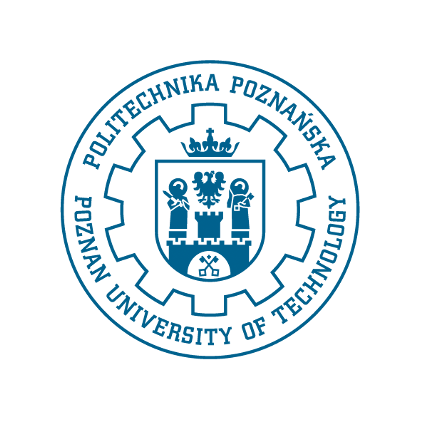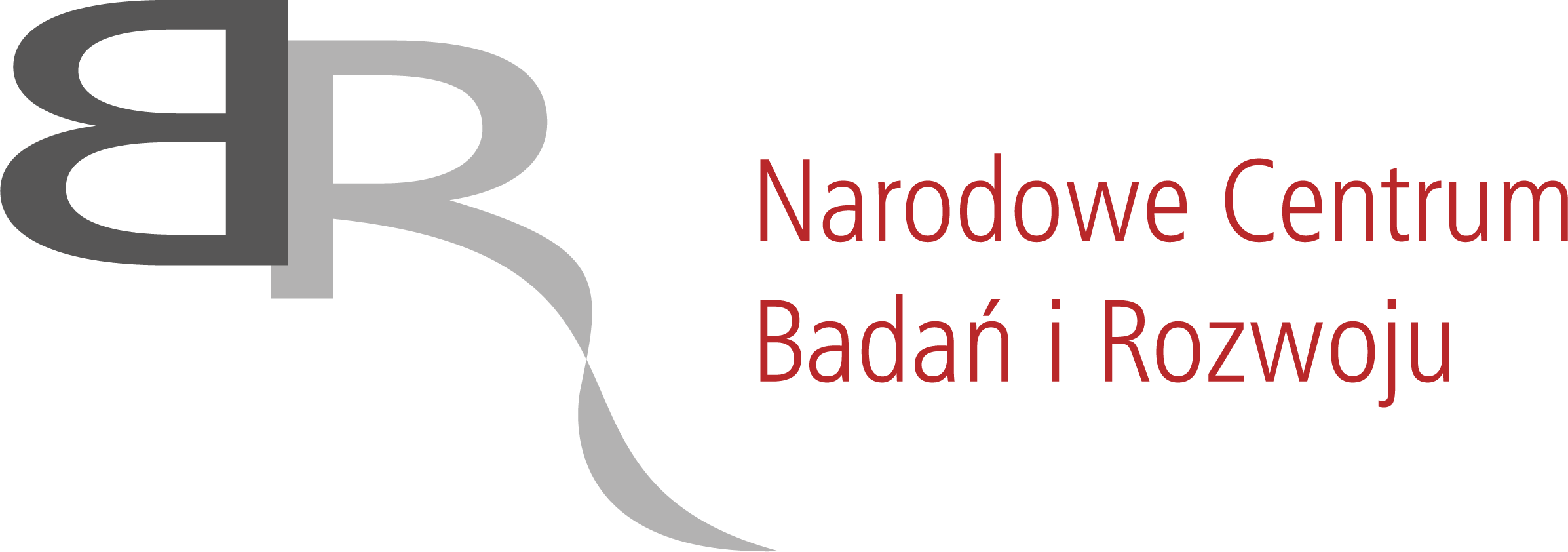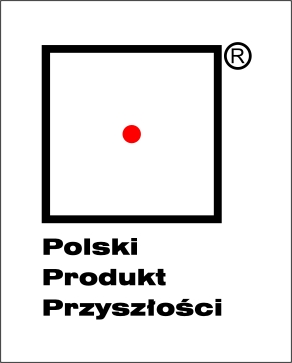Zobacz nasz film
Posłuchaj wypowiedzi członków zespołu i dowiedz się jak wygląda projektowanie od zaplecza
Nagroda Polski Produkt Przyszłości
System AutoMedPrint zdobył główną nagrodę w XXIV konkursie Polski Produkt Przyszłości w kategorii „Produkt Przyszłości instytucji szkolnictwa wyższego i nauki. Przeczytaj więcej.


Publikacje związane z projektem
Publikacje
Projekt AutoMedPrint jest rezultatem wielu lat badań prowadzonych w zespole Laboratorium Wirtualnego Projektowania Politechniki Poznańskiej. Przykładamy dużą wagę do rzetelności i dokładności badań, które prowadzimy. Publikacje dotyczące tematyki projektu ukazują się w wysoko punktowanych czasopismach i są wygłaszane na prestiżowych konferencjach naukowych.
Materials
Study on Properties of Automatically Designed 3D-Printed Customized Prosthetic Sockets
This paper presents the results of experiments conducted on a batch of additively manufactured customized prosthetic sockets for upper limbs, made of thermoplastics and designed automatically on the basis of a 3D-scanned limb of a 3-year-old patient. The aim of this work was to compare sockets made of two different materials—rigid PLA and elastic TPE. Two distinct socket designs with various mounting systems were prepared. To find a reliable set of parameters for cheap and stable manufacturing of usable prostheses using 3D printers, realizing the fused deposition modeling (FDM) process, sets of sockets were manufactured with various process parameters. This paper presents the methodology of the design, the plan of the experiments and the obtained results in terms of process stability, fit and assessment by patient, as well as strength of the obtained sockets and their measured surface roughness. The results are promising, as most of the obtained products fulfil the strength criteria, although not all of them meet the fitting and use comfort criteria. As a result, recommendations of materials and process parameters were determined. These parameters were included in a prototype of the automated design and production system developed by the authors, and prostheses for several other patients were manufactured.
Filip Górski, Radosław Wichniarek, Wiesław Kuczko, Magdalena Żukowska
Rok wydania: 2021
Springer: InterPartner 2020: Advanced Manufacturing Processes II
Environmental Impact of Additive Manufacturing for Individual Supplies
The paper presents a comparison between the traditional and modern process of production of customized ankle-foot orthoses, assuming automation of the latter, and taking into account the environmental impact of both methods. Both processes are presented. The authors’ proposal of a new, automated way of designing and producing the orthoses using additive manufacturing (3D printing) is shown in greater detail, on the case of a 5-year old patient, for whom orthoses were made using both processes. The modern, automated process, consisting of 3D scanning, then automated data processing and design, as well as 3D printing of a resulting 3D model, was realized successfully, with promising results. The product carbon footprint (PCF) was calculated and compared with a traditionally produced orthosis. The 3D printing, a modern process using a biodegradable PLA material, was proven to have almost three times lower PCF than a traditional one, hence proving the feasibility of this approach in terms of environmental friendliness.
Filip Górski, Filip Osiński, Natalia Wierzbicka, Magdalena Żukowska
rok wydania: 2021
Materials
Experimental Studies on 3D Printing of Automatically Designed Customized Wrist-Hand Orthoses
The paper presents results of research conducted on a batch of additively manufactured individualized openwork wrist–hand orthoses made of thermoplastics and designed automatically based on 3D-scanned geometry of a given patient. The aim of the work was to establish an automated design process and find a reliable set of parameters for rapid and affordable manufacturing of usable orthoses on popular 3D printers, with little or no supervision of the process. The paper presents motivations, methodology of automated design, plan of manufacturing and testing, the obtained results in terms of process stability, fit and assessment by patient and strength of the obtained orthoses. Almost 100 manufacturing processes of ready-to-use orthosis parts were carried out in a controlled environment and their results were analyzed thoroughly. The results are promising, as most of the obtained products fulfil the strength criteria, although not all of them meet the economic criteria. As a result, a recommended set of process parameters was determined. These parameters were included in a prototype of the automated design and in a production system developed by the authors.
Filip Górski, Radosław Wichniarek, Wiesław Kuczko, Magdalena Żukowska, Monika Lulkiewicz, Przemysław Zawadzki
rok wydania: 2020
Materials
Determination of the Elasticity Modulus of Additively Manufactured Wrist Hand Orthoses
The article describes the experimental and simulation research on the material properties of the individualized wrist orthoses produced in the additive manufacturing (AM) process by the fused filament fabrication (FFF) method. The authors produced a series of standard (normalized) samples for three-point bending from acrylonitrile butadiene styrene (ABS) filament on a low-budget 3D printer and a series of samples in the shape of a fragment of the orthosis and the entire orthosis. All types of samples were subjected to experimental tests on a universal testing machine, which allowed us to determine the modulus of elasticity of the produced materials by comparing it with finite element method (FEM) simulation models in the ABAQUS environment. The adopted research methodology allowed us to compare the material properties of the material of the entire product—wrist hand orthosis (WHO)—with the material properties of standard bending samples. The obtained values of Young’s modulus are characterized by a large discrepancy between the standard samples and the entire orthosis. On the other hand, the samples with the shape of the middle part of the orthosis were similar in the value of Young’s modulus to the results obtained during the examination of the complete orthosis.
Krzysztof Łukaszewski, Radosław Wichniarek, Filip Górski
rok wydania: 2020
Advances in Science and Technology Research Journal
Accuracy and Repeatability of Limb Scans Obtained on the Semi-Automatic Measuring Station
Designing individualized medical devices requires the collection of anthropometric data from the patient. This can be done by using the 3D scanning process. Despite many advantages, it has significant drawbacks, limiting the suitability of its use for many types of medical devices. This paper presents the design of measuring station that allows to increase the quality of anthropometric data obtained in the scanning process of humans limbs. Accuracy and repeatability of data obtained on the station is presented and compared to reference scans. What’s more, thanks to the automatisation of certain activities in the scanning process, operating the device requires the operator to have much lower competencies and workload.
Radosław Wichniarek, Filip Górski, Wiesław Kuczko, Magdalena Żukowska
rok wydania: 2020
Advances in Science and Technology Research Journal
Rapid Manufacturing of Individualized Prosthetic Sockets
The paper presents experimental process of manufacturing individualized prosthetic sockets out of thermoplastic material, using an additive manufacturing technology of Fused Deposition Modelling. The patient is an adult male with an amputated forearm. His stump was 3D scanned using a low-cost 3D scanner in a semi-automated manner. Then, the anthropometric data was used for creation of a model of a prosthetic socket, which was then manufactured. Three different 3D printers were used, with three different materials (ABS, nylon and PC) and three different sets of process parameters. The paper contains descriptions of the process, its results and opinions by the patient, leading to selection of an optimal process course variant.
Filip Górski, Radosław Wichniarek, Wiesław Kuczko, Magdalena Żukowska, Ewa Suszek
rok wydania: 2020
Advances in Science and Technology Research Journal
Prototyping of an Individualized Multi-Material Wrist Orthosis using Fused Deposition Modelling
The paper presents design and manufacturing process of an individualized wrist orthosis. The patient’s upper limb was 3D scanned and the orthosis was design using a CAD system. Each part of the orthosis consists of two different materials, that fulfill different functions. By using the double-head Fused Deposition Modelling machine it was possible to produce theses parts in a single process without the need for additional assembly operations. The orthosis has been tested for mutual fit of parts, strength and comfort of use.
Filip Górski, Wiesław Kuczko, Weronika Weiss, Radosław Wichniarek, Magdalena Żukowska
rok wydania: 2019
Springer: ICCES 2019: Computational and Experimental Simulations in Engineering
Automated Design of Customized 3D-Printed Wrist Orthoses on the Basis of 3D Scanning
The paper presents development and studies of an intelligent CAD (Computer Aided Design) model of an openwork wrist orthosis. The key feature is customization capability on the basis of shape and size of patient’s hand and arm. A patient is first 3D scanned using a cheap structured light scanner. Then, the gathered anthropometric data is used as a base for automated adjustment of geometry of an intelligent model of a wrist orthosis. Finally, the orthosis can be 3D printed using low-cost machines. Automation of design eliminates a need of manual processing of 3D scans and 3D models, as the model automatically adjusts itself to patient’s data and is ready for manufacturing. The paper presents basic concepts, development and studies on such a model. The studies comprised of collision analysis between an automatically generated orthosis and patient’s own hand and arm, as well as manufacturing examples of orthoses and fitting them to real patient’s hand. The results are generally positive, but further development is required to obtain optimal results for great majority of patients.
Filip Górski, Przemysław Zawadzki, Radosław Wichniarek, Wiesław Kuczko, Magdalena Żukowska, Izabela Wesołowska, Natalia Wierzbicka
Rok wydania: 2019
Springer: ICIE 2021: Innovations in Mechanical Engineering
Use of Virtual Mirror in Design of Individualized Orthopedic Supplies
The paper presents studies on a prototype of a virtual mirror application, intended to aid the design process of individualized orthopedic supplies, such as limb orthoses or prostheses. The application is a part of an automated design and manufacturing system, relying on 3D scanning and 3D printing for manufacturing of supplies adjusted to specific patients. The application itself is divided into two parts: the configurator and the mirror. The paper presents briefly a concept, a prototype application based on Kinect sensor and studies on a small group of patients, as well as results of a survey study. Certain inaccuracies of Kinect sensor were detected in the tests, preventing smooth user experience with the mirror. However, the presented approach was viewed in a favorable way by the test group – the concept of a virtual mirror is a promising solution that should be utilized in the design process of individualized orthopedic supplies. On the basis of observations and surveys, recommendations for future development were formulated.
Filip Górski, Paweł Buń, Kaja Stefańska
Rok wydania: 2021
The research was funded by the National Centre for Research and Development – LIDER VIII program, contract no. LIDER/14/0078/L-8/16/NCBR/2017, project title: "Automation of Design and Rapid Production of Customized Orthopedic and Prosthetic Products Based on Anthropometric Measurement Data."



The award in the Polish Product of the Future Competition for “AutoMedPrint – an automated system for designing and 3D printing personalized limb orthoses and prostheses based on non-contact anthropometric measurement data” in the amount of PLN 100,000 was financed through Sub-measure 2.4.1 of the Intelligent Development Operational Programme (POIR), “Center for Analysis and Piloting of New Instruments inno_LAB.”


